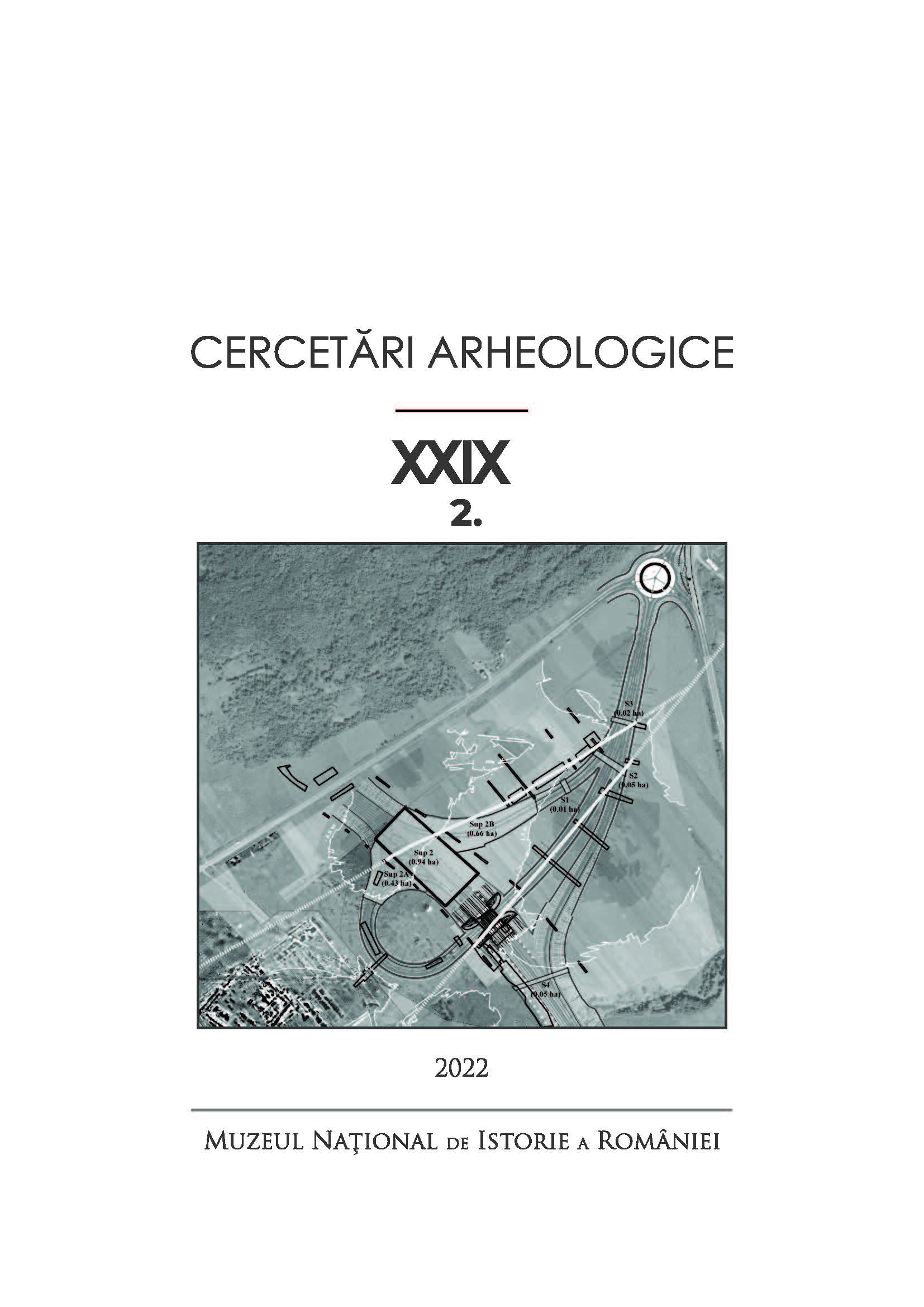Cercetări arheologice la Vitănești „Măgurice” (2009-2019)
Archaeological research at Vitănești "Măgurice" (2009-2019)
Author(s): Radian-Romus Andreescu, Katia Moldoveanu, Ion Torcică, Pavel Mirea, Andreea BîrzuSubject(s): History, Archaeology, Ancient World, Prehistory
Published by: MUZEUL NAȚIONAL DE ISTORIE A ROMÂNIEI
Keywords: tell settlement; Gumelnița culture; constructions; hearths; pottery;
Summary/Abstract: The archaeological excavations at Vitănești “Măgurice” tell-settlement began in 1993 encompassed in a larger objective which targets learning the main characteristics of the neo-eneolithic habitation in the Teleorman River area. The 2009-2019 excavation seasons pursued several objectives. The first was accomplishing the research of the last settlement layer, Gumelnița B1. The second objective was starting the research on the next settlement layer, by digging up both sectors. One campaign, in 2012, was dedicated to researching an off-tell settlement, discovered in 1999, named “Vitănești II”. This article reviews the main results of research over the last decade. Thereby, the research carried out in the northeast sector (Sy) targeted several buildings and a large area of animal bones located at the edge of the settlement. Four burnt buildings belonging to the last habitation level, strongly deteriorated by late interventions, were found in this surface. An area with a heavy concentration of antler materials was found in the north-west side of the settlement, which could have been a workshop for processing antlers. The archaeological inventory is very rich, consisting of: in situ vessels, many antler-, bone-, and flint- artifacts, loom weights, grinding stones, and figurines. Among these are some remarkable finds: a gold pendant, an anthropomorphic vessel, and a figurine with eyes made of two pieces of shell. The rather inconsistent remains of the buildings, some of which were burnt, were discovered underneath this level, pointing to a prior habitation to the last existence sequence of the settlement on “Măgurice”. The last campaigns focused on the Sx sector, having as main goal identifying the remains of habitation prior to the last known habitation layer. The two researched surfaces, H-L and M-R revealed a complex situation. Thereby, the researches revealed the remains of an unburnt building in H-L surface, indicating that it belonged to Gumelnița A2 level, based on the ceramic fragments. Many archaeological artifacts were discovered in the rest of the H-L surface, concentration of materials that also continued in the nearby surface, M-R. Because no buildings have existed in this area for a long time, a large amount of archaeological material has accumulated. The most interesting find made in the M-R surface is represented by the remains of a burnt building, coded L18, and next to it, a hearth (or oven) with a novel way of construction. The building had a rich inventory made out of an assemblage of grinding stones and many in situ vessels.
Journal: Cercetări Arheologice
- Issue Year: XXIX/2022
- Issue No: 2
- Page Range: 457-477
- Page Count: 21
- Language: Romanian

